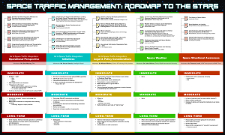Standard Approach to Evaluating and Approving Spacecraft Landing Sites Around the World
Abstract
One of the major challenges of integrating space traffic into the National Airspace System (NAS) is consistency in preplanning for a spacecraft to conduct a mission. Sierra Nevada Corporation’s (SNC) Space Systems has spent the last year developing a standard approach for evaluating potential landings sites for the Dream Chaser® spacecraft. The development of this approach helps streamline space traffic integration at landing sites around the world within the framework of the FAA reentry licensing requirements. This method has been informally reviewed within the FAA and by the DLR (German Aerospace Center) for an international perspective. The methodology is phased based allowing interested sites to choose a level of assessment and gain confidence a Dream Chaser landing could occur at their site. Phases of evaluation include reviews of items such as sonic boom, trajectory analysis, and environmental review to coordination with stakeholders and even the submission of a reentry license application paired to the site for FAA review and approval. SNC hopes that standard approaches like this become more common and significantly aid the space industry with regularly implementing and conducting reentry operations, meanwhile mitigating some of the challenges with integrating into the NAS. This paper will discuss the details of the Dream Chaser Spacecraft Preferred Landing Site Designation methodology and the benefits it presents to the growing industry of commercial space.
Standard Approach to Evaluating and Approving Spacecraft Landing Sites Around the World
One of the major challenges of integrating space traffic into the National Airspace System (NAS) is consistency in preplanning for a spacecraft to conduct a mission. Sierra Nevada Corporation’s (SNC) Space Systems has spent the last year developing a standard approach for evaluating potential landings sites for the Dream Chaser® spacecraft. The development of this approach helps streamline space traffic integration at landing sites around the world within the framework of the FAA reentry licensing requirements. This method has been informally reviewed within the FAA and by the DLR (German Aerospace Center) for an international perspective. The methodology is phased based allowing interested sites to choose a level of assessment and gain confidence a Dream Chaser landing could occur at their site. Phases of evaluation include reviews of items such as sonic boom, trajectory analysis, and environmental review to coordination with stakeholders and even the submission of a reentry license application paired to the site for FAA review and approval. SNC hopes that standard approaches like this become more common and significantly aid the space industry with regularly implementing and conducting reentry operations, meanwhile mitigating some of the challenges with integrating into the NAS. This paper will discuss the details of the Dream Chaser Spacecraft Preferred Landing Site Designation methodology and the benefits it presents to the growing industry of commercial space.


